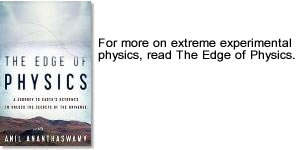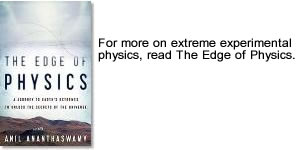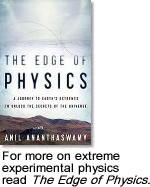Posts from — November 2010
Likely remnant of black hole explosion seem by FERMI

Image: NASA
NASA’s FERMI satellite is seeing what appears to be the remains of a giant black hole that erupted millions of years ago. The structure-which shows up as two massive bubbles emitting gamma-rays-is at the centre of the Milky Way and spans an astounding 50,000 light years.
The image above (courtesy: NASA) shows the bubbles in full glory.
Doug Finkbeiner of the Harvard-Smithsonian Center for Astrophysics in Cambridge, Massachusetts, and his colleagues had to do some fancy signal processing to extract this image from the diffuse gamma-ray background that pervades the sky.
Finkbeiner is no stranger to such analysis. A few years ago, he identified something called the WMAP haze-a diffuse emission at the centre of the galaxy, which may be due to dark matter particles. He found the haze by subtracting from NASA’s WMAP data-which measured the cosmic microwave background-signals emanating from known sources in the galaxy, such as hot dust and synchrotron radiation from electrons spiralling around magnetic fields. After accounting for all known sources, including the cosmic microwave background, there was still some leftover emission, which came to be called the WMAP haze.
Now, he and his colleagues have used similar skills to remove the gamma-ray background creating by fast-moving particles interacting with light and interstellar gas. It also explains why other astronomers looking at the same data from NASA’s FERMI satellite did not see the giant bubbles.
See NASA’s press release for more details.
November 10, 2022 1 Comment
Living next door to Alice: closest you can get to a big bang

THE ALICE experiment at the Large Hadron Collider has seen the highest temperatures ever created in an experiment, according to a press release from the Science and Technology Facilities Council, UK. On 7 November, the LHC collided lead ions (instead of the usual protons against protons), and this produced what are referred to as mini big bangs: dense fireballs that have temperatures of about 10 trillion degrees.
At such temperatures and energies, the nuclei of atoms melt into a mix of their constituents: quarks and gluons. The fireball is known as a quark-gluon plasma.
The formation of the plasma is a key prediction of the extremely successful theory of quantum chromodynamics (QCD), which tells us that with increasing energy scales (or as we go back to earlier and earlier times in the universe’s history), the strength of strong interactions falls asymptotically to zero. This discovery of “asymptotic freedom” is what resulted in a Nobel Prize for David Politzer, Frank Wilczek and David Gross in 2004.
The quark-gluon plasma has been studied in detail at the Relativistic Heavy Ion Collider (RHIC) at Brookhaven, which smashes gold ions head-on. In Feb 2010, RHIC researchers reported the creation of a plasma that had temperatures of 4 trillion degrees C.
Now, with a 287 TeV beam (3.5 TeV x 82, the charge of lead ions), the LHC’s lead ions are colliding with an energy about 13.5 times greater than what has been achieved at RHIC. The resultant plasma fireballs will allow physicists using the 10,000-tonne ALICE to study the universe as it was about a millionth of a second after the big bang.
One can only wonder about what surprises are in store. At RHIC, the biggest surprise was that the quark-gluon plasma, instead of being a gas acts like a perfect liquid.
November 7, 2022 1 Comment



